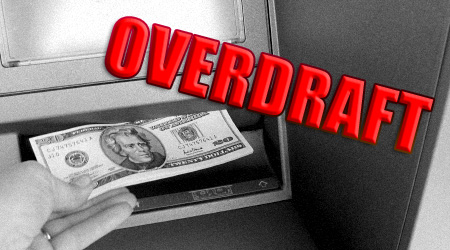Banks Still Making Billions In Overdraft Fees

The Consumer Financial Protection Bureau released a study which shows bank overdraft fees are costing consumers hundreds of dollars per year even with new regulations passed in 2010. Overdrawing a checking account will cost on average $225 per customer resulting in $32 billion in annual overdraft revenue for banks.
Overdraft fees occur when a customer uses a debit card to make a purchase and the bank allows the transaction to complete even when there aren't enough funds available. Non-sufficient fund (NSF) fees are slightly different in that they result from a check or automatic payment being processed overdrawing the account.
Overdraft and NSF fees can be as high as $35 per transaction and add up quickly which is why "banks aren't complaining, with overdraft and non-sufficient fund fees making up 60% or more of consumer checking account fee revenue, the CFPB estimated," as reported by CNN.
A 2010 Federal Reserve rule was created to provide transparency to bank overdrafts programs. Instead of the old system where banks would automatically opt-in consumers for overdraft protection they are now opted-out by default. As a result, opt-in rates at certain banks range anywhere from 40% to less than 10%.
Bank customers enroll in overdraft protection for a number of reasons but most often it's to minimize the chance of a mortgage or auto loan payment not getting paid. These customers however tend to pay more in fees which leads to "involuntary bank account closure rates" that were double than for consumers who did not participate in overdraft protection programs.
"Consumers need to be able to anticipate and avoid unnecessary fees on their checking accounts," CFPB Director Richard Cordray said in a statement to CNN. "But we are concerned that some overdraft practices may increase consumer costs beyond reasonable expectations."
Elsewhere on StockMonkeys.com







